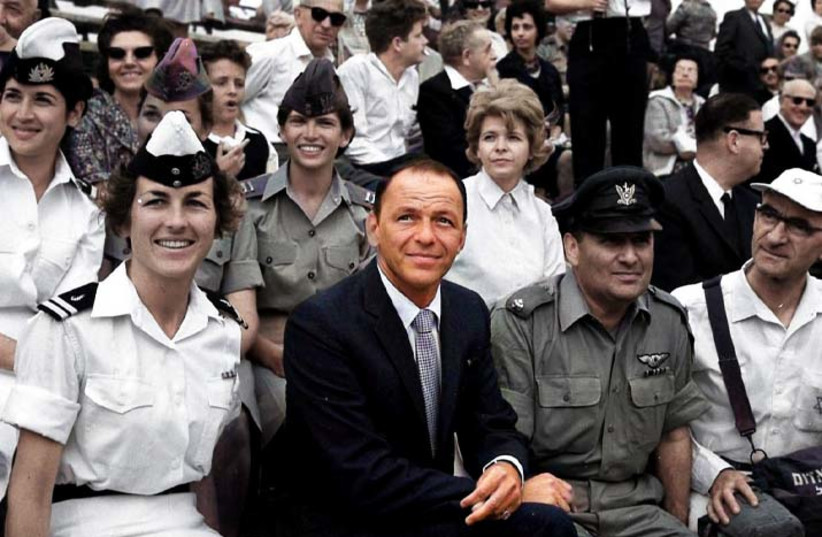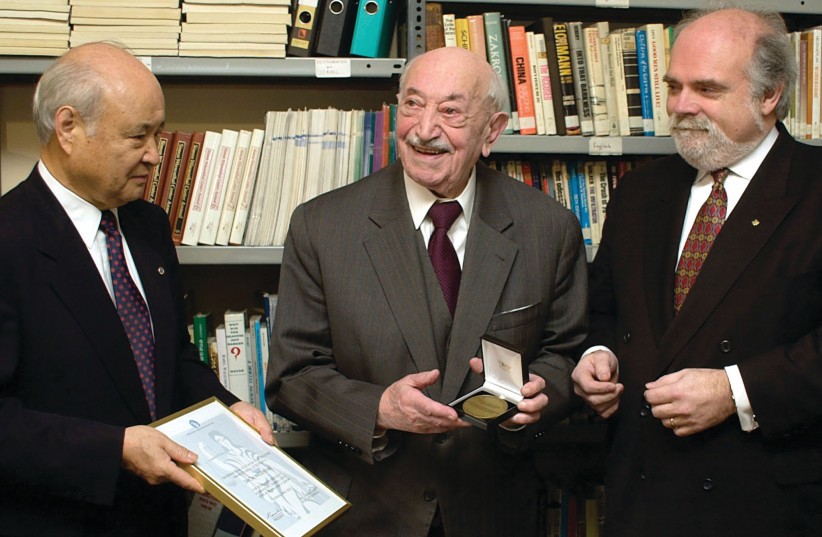Amazon’s ‘Hunters’ season 2 mixes fact and fiction about the holocaust

Hitler is alive and in hiding in the final season of ‘Hunters,’ Amazon’s series about Jews hunting and killing Nazis in the 70s.
When Amazon Prime released the first season of “Hunters” in 2020, it advertised its Nazi-hunting TV show as “Inspired By True Events.”
That was true only in the loosest possible sense of the term. Starring Al Pacino and Logan Lerman and produced by Jordan Peele, “Hunters” told a bloody, souped-up, almost entirely embellished story of a Jewish-led team of multiracial Nazi hunters in the 1970s trying to stop a “Fourth Reich” from rising in the United States.
The show was immediately controversial: Series creator David Weil, the grandson of Holocaust survivors, had to defend his show from the Auschwitz Memorial, which harshly criticized “Hunters” for — among other scenes — depicting a human chess game at Auschwitz that never took place.
Despite all that, “Hunters” still had some basis in reality. There were, in fact, a handful of Jewish Nazi hunters active across the Americas at that time, most famously Simon Wiesenthal (played in the series by Judd Hirsch), who did succeed in bringing several prominent Nazis to justice.
Three years later, “Hunters” has, similarly, used the historical record as a mere suggestion for its second and final season, which debuts Friday and tells an outrageous story about hunting Hitler himself. Here’s how viewers can separate fact from fiction in season 2.
Hitler in Argentina
The end of the first season hinted that things were about to go seriously off the rails, as the “real” Hitler and Eva Braun were revealed to be happily alive and hiding out in Argentina — seemingly validating decades’ worth of baseless conspiracy theories about the Nazi leader’s supposed escape from his Berlin bunker in 1945. (Also throwing things for a loop: the reveal that Pacino’s character, who had presented himself as the hero’s Holocaust-survivor grandfather, was secretly the Nazi “butcher” they had been hunting in disguise, and the man they killed after a season-long hunt was the real survivor.)
In the second season, the disbanded Hunters reunite in 1979 to follow Hitler’s trail to Argentina, where many real-life Nazis did hide out. Meanwhile, in flashbacks to 1975, Pacino’s Nazi “butcher” works furiously to cover his tracks as he poses as a successful Jewish businessman and philanthropist in the United States.
Hitler-survival conspiracy theories seem to, well, keep surviving. In the decades since the war’s end, many conspiracy theories regarding Hitler’s fate have proliferated, and a good number of them coalesce around the unsupported claim that he, like other top Nazi commanders, was ferreted out of Germany and into South America via a secret underground network. “Hunting Hitler,” a recent top-rated History Channel docuseries, milked three seasons out of the idea.
But of course there were Nazis who successfully escaped persecution at Nuremberg by fleeing to South America, and “Hunters” crafts its Hitler narrative on the scaffolding of their real-life stories. The most infamous case involved death camp commander Adolf Eichmann, who hid in Argentina until Mossad agents uncovered his location and kidnapped him in 1960’s Operation Finale to stand trial in Jerusalem.
The Kreisky-Peter-Wiesenthal Affair
In the universe of the show, the fake Meyer played by Pacino is friends with Wiesenthal, a seasoned Nazi hunter. When the two meet in 1975 in an early episode of the second season, Meyer congratulates Wiesenthal on his recent success in Austria.
This is a reference to a real-life 1975 political scandal, in which Wiesenthal and a team of researchers revealed the past Nazi activities of Austrian politico Friedrich Peter as the country’s Jewish chancellor, Bruno Kriesky, prepared to offer Peter’s right-wing party a role in his ruling coalition.
Wiesenthal’s actions led to a falling-out between him and Kriesky, who variously called him a “Jewish fascist” and a member of the Gestapo. But the Nazi hunters declared victory over having rooted out the S.S. past of a prominent postwar politician. (Peter’s party never joined the coalition.)
‘Reclaiming’ Jewish-owned businesses in Europe
In an early scene of the second season, one of the disguised hunters walks into an Austrian candy shop in 1979 and innocently inquires how long the shopkeeper has owned it. The store has been in his family for generations, comes the reply.
But, the hunter muses, there is a strange indentation on the doorpost — almost like a mezuzah. Could the shop have, in fact, been Jewish-owned before the Nazis came to power?
It turns out the hunter is right, and the shopkeeper will pay dearly for his denials. Again, the general arc of this narrative starts with real history, as there are countless examples of Nazis having seized Jewish-owned properties and businesses and destroyed the records of Jewish ownership, making it nearly impossible for surviving Jews after the war to reclaim their properties.
Author Menachem Kaiser recently explored how Nazi property seizures altered his own family history in the nonfiction book “Plunder,” which won the Sami Rohr prize for Jewish literature.
Frank Sinatra’s Jewish activism

As part of Al Pacino’s character’s disguise as a Holocaust survivor in postwar America, he becomes an active philanthropist to Jewish causes. At one point, he can’t help but brag that he convinced Frank Sinatra to make a hefty donation.
In fact, the famous crooner, despite not being Jewish himself, was a vocal and documented supporter of Jewish causes. He was presented with awards from Hebrew schools; visited Israel many times and helped build a youth center in Nazareth; owned a $10,000 yarmulke; and even gave his son, Frank Sinatra Jr., the Jewish middle name of Emmanuel. After Sinatra’s death, to avoid paparazzi, his body was hidden in a Los Angeles Jewish funeral home for decades.
Jerusalem Post Store
`; document.getElementById("linkPremium").innerHTML = cont; var divWithLink = document.getElementById("premium-link"); if (divWithLink !== null && divWithLink !== 'undefined') { divWithLink.style.border = "solid 1px #cb0f3e"; divWithLink.style.textAlign = "center"; divWithLink.style.marginBottom = "15px"; divWithLink.style.marginTop = "15px"; divWithLink.style.width = "100%"; divWithLink.style.backgroundColor = "#122952"; divWithLink.style.color = "#ffffff"; divWithLink.style.lineHeight = "1.5"; } } (function (v, i) { });

